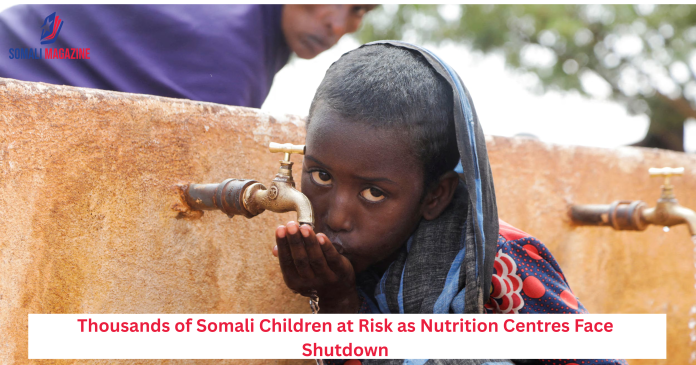Facebook Twitter (X) Instagram Somali Magazine - People's Magazine
Save the Children to close over 120 facilities by June due to aid cuts, threatening the lives of 55,000 children amid rising hunger and malnutrition
Save the Children, the biggest non-government organization providing health and nutrition support for children in Somalia, has announced that it will soon close more than 25% of its nutrition and health centres in the country. These closures will affect at least 55,000 children who depend on these services for survival. The shutdown will happen by June due to major cuts in international aid funding.
A total of 121 nutrition centres will be closed, including every single one in Baidoa, a city in southern Somalia that is among the most vulnerable in the country. This comes at a time when humanitarian aid to Somalia is shrinking, even though the need for it is growing. The country is already dealing with serious food shortages, made worse by droughts and conflict.
“It’s terrifying to think about what could happen in Somalia if these services are cut. People here already know the pain of hunger and famine,” said Mohamud Mohamed Hassan, Save the Children’s Country Director for Somalia.
According to the Food Security and Nutrition Analysis Unit, an estimated 1.8 million children in Somalia are expected to suffer from acute malnutrition this year. Out of these, around 479,000 children could develop severe acute malnutrition, a dangerous condition that can lead to death if not treated in time.
Baidoa is home to more than 800,000 people who have been forced to leave their homes due to ongoing conflict and repeated droughts. Many of them live in camps with limited access to food, clean water, and medical care.
Fatima, a 25-year-old mother living in one of these camps, says Save the Children’s nutrition services saved her one-year-old daughter Fardowso’s life. Her baby was severely malnourished and received emergency food and medicine from the centre. “If we didn’t get help here, we would have to just watch our children suffer and die. There’s nowhere else to go,” she said.
Dr. Mustafa Mohammed works at a Save the Children-supported stabilisation centre in Baidoa. The centre treats severely malnourished children using vitamin-rich milk, hydration drips, and peanut-based therapeutic food. Over 95% of the children who come to the centre recover fully. However, as more centres close, more families are crowding into the few that remain open.
“If our centre shuts down, children will be in serious danger. There is no other place for them to go,” Dr. Mohammed warned.
The situation could get worse by June, which marks the end of the rainy season. This is usually a time when hunger levels rise. Projections suggest that 11% more children could become severely malnourished in 2025 compared to last year. Sadly, this increase is happening while support services are being reduced.
Save the Children has described the lack of funding as a “political choice” with deadly results. “If we don’t find more funding soon, many children will die,” said Hassan.
Somalia has faced hunger crises for many years due to a mix of climate problems like droughts, ongoing conflict, and lack of financial support from the international community. Despite growing needs, aid for Somalia remains far below what is necessary.
Save the Children has been working in Somalia since 1951. In 2024, the organization helped 3.2 million people, including 1.9 million children. Now, with fewer resources and growing challenges, the future for Somalia’s most vulnerable children looks increasingly bleak unless urgent help is provided.

